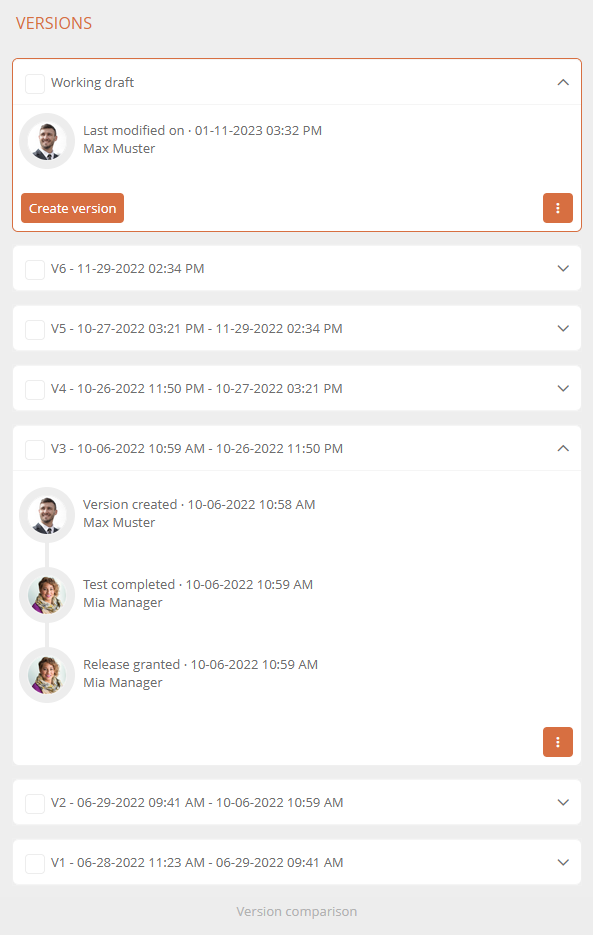Release workflow — release objects
If you have finished modeling and configuring an object, such as a process, or want to pass on an intermediate status of it, you can create a version for the object. You can edit objects only in their working draft. Once you release an object and a version exists, you can no longer edit the released state. However, if an object has been successfully released, you can continue editing it on the new working draft of the object.
Start release:
You can start the release workflow for objects such as processes and documents in all areas in the Portal via the context menu.

Procedure:
The standard release workflow for processes has the following statuses and transitions (actions):

-
Version quick release: With the quick release, you can release an object directly without any intermediate steps. If an object is released, it is visible to all and cannot be edited anymore.
-
Create version: When you start the release for an object, the object is passed on to a tester. The object is then no longer editable. In this first step, a tester and a releaser must be entered. Here you can also select users who are to acknowledge the later released version (for more information, see Acknowledgments).
-
Complete version test: If the tester has tested the object and the object has passed the test, then the object is passed to the releaser.
-
Reject version test: If the tester has tested the object and the object does not pass the test, for example because there are still errors or it is not complete, then the object is given the status Test rejected. From here, the object draft can only be deleted.
-
Grant version release: If the releaser has checked the object in a second step, he/she can release it. If the object is released, it is visible as a version for all authorized users. Only now a new working draft of the object is available, which can be edited further on the state, which was released last.
-
Reject version release: If the releaser has checked the object in a second step and discovered errors, he/she can reject the release. The object gets the status Release rejected. From here, the object draft can only be deleted.
-
Delete draft version: If an object has not passed the test or release, the object draft can be deleted. The object becomes a working draft and can be edited again.
-
Archive processes: You can archive working drafts of objects to remove them from the productive enterprise model. Once an object is archived, it is moved to the Archive folder.
Versions in the history
In versioned objects, the individual versions are listed in the version history. In the object header you can see which version of the object is currently displayed.

In the version history you can view the versions, activate and display the one you want or compare two versions:

See also: To learn more about the version history, see Version history.
See also: For more on releasing and versioning, see Versioning in the standard release workflow.
